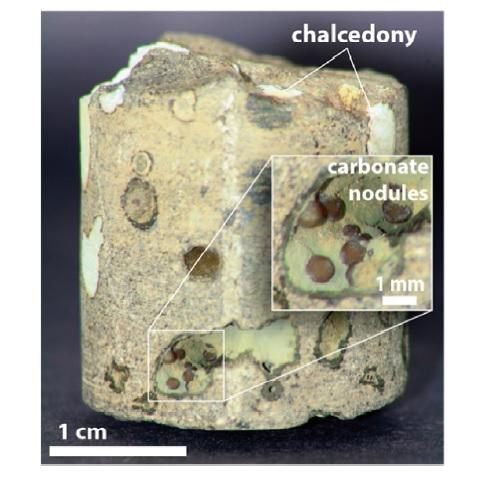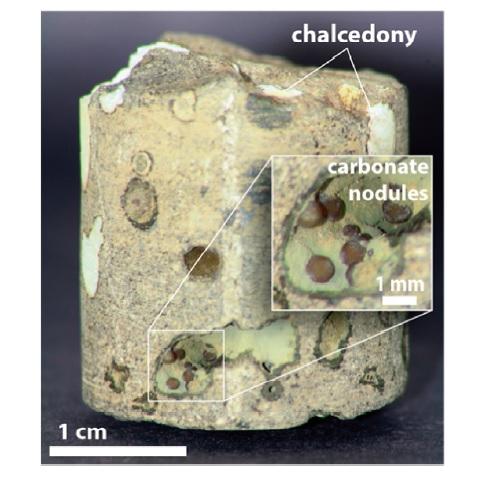
Credit: American Chemical Society
In November, the Paris Climate Agreement goes into effect to reduce global carbon emissions. To achieve the set targets, experts say capturing and storing carbon must be part of the solution. Several projects throughout the world are trying to make that happen. Now, a study on one of those endeavors, reported in the ACS journal Environmental Science & Technology Letters, has found that within two years, carbon dioxide (CO2) injected into basalt transformed into solid rock.
Lab studies on basalt have shown that the rock, which formed from lava millions of years ago and is found throughout the world, can rapidly convert CO2 into stable carbonate minerals. This evidence suggests that if CO2 could be locked into this solid form, it would be stowed away for good, unable to escape into the atmosphere. But what happens in the lab doesn't always reflect what happens in the field. One field project in Iceland injected CO2 pre-dissolved in water into a basalt formation, where it was successfully stored. And starting in 2009, researchers with Pacific Northwest National Laboratory and the Montana-based Big Sky Carbon Sequestration Partnership undertook a pilot project in eastern Washington to inject 1,000 tons of pressurized liquid CO2 into a basalt formation.
After drilling a well in the Columbia River Basalt formation and testing its properties, the team injected CO2 into it in 2013. Core samples were extracted from the well two years later, and Pete McGrail and colleagues confirmed that the CO2 had indeed converted into the carbonate mineral ankerite, as the lab experiments had predicted. And because basalts are widely found in North America and throughout the world, the researchers suggest that the formations could help permanently sequester carbon on a large scale.
###
The authors acknowledge funding from the U.S. Department of Energy; the National Energy Technology Laboratory; the Big Sky Carbon Sequestration Partnership; Shell Exploration & Production Company; Portland General Electric; and Schlumberger Inc.
The paper's abstract will be available on Nov. 18 here: http://pubs.acs.org/doi/abs/10.1021/acs.estlett.6b00387
The American Chemical Society is a nonprofit organization chartered by the U.S. Congress. With nearly 157,000 members, ACS is the world's largest scientific society and a global leader in providing access to chemistry-related research through its multiple databases, peer-reviewed journals and scientific conferences. Its main offices are in Washington, D.C., and Columbus, Ohio.
To automatically receive news releases from the American Chemical Society, contact [email protected].
Follow us: Twitter Facebook
Media Contact
Michael Bernstein
[email protected]
202-872-6042
@ACSpressroom
http://www.acs.org
############
Story Source: Materials provided by Scienmag




